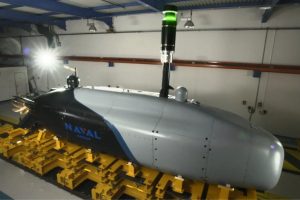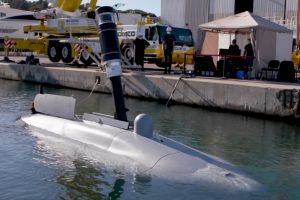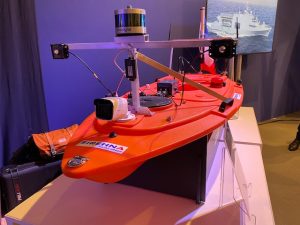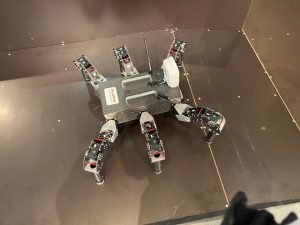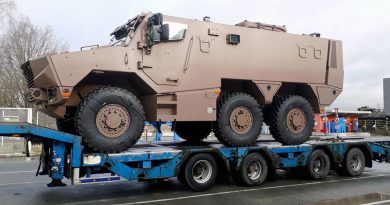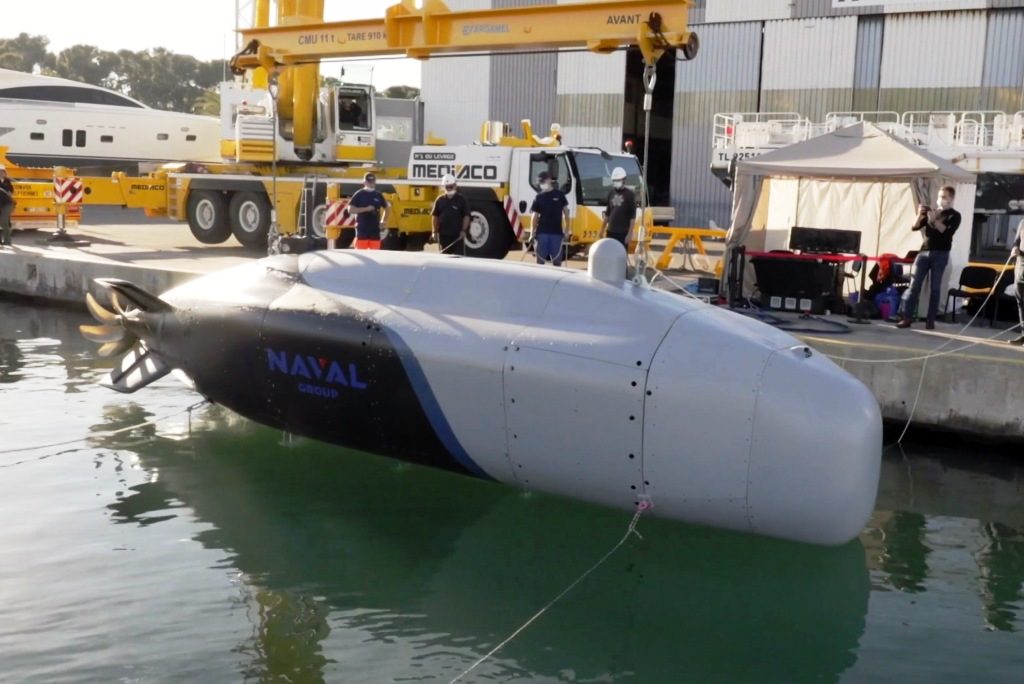
Naval Group unveiled a new LUUV and other solutions at the 5th edition of its Naval Innovation Days
By Joseph Roukoz
During the 5th edition of Naval Group’s Naval Innovation Days, dedicated to innovation in the field of Naval Defence, the company chairman and CEO Pierre-Eric Pommellet and the same group’s technical and innovation director Eric Papin unveiled the ongoing activities on a new Large ocean-going Unmanned Underwater Vehicle (LUUV) demonstrator or Démonstrateur de Drone sous-marin Océanique (DDO), among a dozen innovations in the sector of composite materials, decision support, cyber security, unmanned systems physical integration, maintenance and support. These are likely to revolutionize the way of waging war on and under the oceans by countering new threats such as drone swarms or supersonic missiles.
Naval Group launched the DDO design and development programme with internal funding in 2016, with the design phase taking about two years, followed by the development, construction and integration activities up to last year. Developed in partnership with Thales, which supplies the sensors suite, and the start-up Delfox, specialized in Artificial Intelligence (AI), the DDO is able to reconfigure its mission and its trajectory, according to the evolution of the situation, thanks to its on-board AI, which gives it “decision-making autonomy”. This LUUV has been designed for long-range intelligence, surveillance, reconnaissance, alongside dedicated protection, underwater detection missions in support of a carrier strike group, surface ships and submarines.
These oceanic drones “will give an extension to marine surveillance” in the words of the chairman and CEO of Naval Group “as well as additional observation and defense capabilities” to the navies which will deploy these smart platforms. They will be very different from current drones that stay close to ships. “These will not be tele-operated drones, with a thread on their feet,” explained Eric Papin, Director of Innovation. This new generation of oceanic drones will be able in the future to carry out missions of several thousand kilometers, for several weeks in full autonomy.
With a 10 meters length, a 10 tonnes displacement and the capability to dive at depth of 150 meters and sail at a maximum speed of 15 knots, operational speed being around 6 knots, the current DDO platform was launched in November 2020 and carried out its first sea trial campaign in February 2021, off Toulon. The next phase connected to navigation and autonomy test and trials will be conducted in the incoming two months while the first deployment of the drone in full autonomous surveillance mode will be conducted in spring 2022, said Cyril Levy, head of UxV & MCM business line, Naval Group. Thanks to its onboard sensors suite including sonar, radar and EO/IR payload, alongside VHF, UHF radio, wifi and satellite communications, this underwater drone will be able to conduct patrols of up to a hundred nautical miles from a mother ship or a port in order to detect and identify possible threats using an onboard database. The endurance can vary from several days of the current platform to weeks with a complete new energy source, requesting a longer hull up to 20 meters. Naval Group representatives envisage the DDO as an underwater autonomous platform which would be used, for example, as a “scout” of a carrier strike group – reducing the burden on nuclear attack submarines – or to secure the exit area of the French SSBN from their Île-Longue naval base. The new platform can be armed with mines, as shown on videos presented during the Innovation Days, or torpedoes, but the current DDO is carrying only an ISR payload.
If the tests are conclusive, the first oceanic drone could enter service in the French Navy, with which Naval Group will open discussions, by 2025. By then, Naval Group must have decided on the DDO propulsion system which could be based on a fuel cell running on hydrogen.
Always concerned by environmental issues, Naval Group also made further improvements in energy efficiency and reduction of polluting emissions. The French shipbuilder is working in partnership with Saft batterie specialist on the development of Lithium-Ion batteries, its (battery) management system and security features. Naval Group also qualified an underwater energy production package or air independent propulsion (AIP) system which recharges the batteries of ships and submarines featuring conventional propulsion (diesel-electric). “These AIPs are ready to be integrated on our customers’ boats,” explains Eric Papin. These systems give underwater platforms and boats almost unlimited autonomy, until hydrogen-based solutions are developed.
Another field of innovation regards drone swarms. “They can constitute a saturating type threat, but we can also use them to our advantage to respond to this kind of threat,” explains Eric Papin. Naval Group is also developing demonstrators, in partnership with start-ups, to test how to detect hostile swarms and how to neutralize them using lasers. Another major innovation is the development of aerial drones launched from a submarine.
Naval Group also presented several solutions allowing technological innovation to be brought on board existing boats, via software updates. “Like combat aircraft, frigates, for example, will switch from one standard to another. This is the case of the intervention and defense frigates or Frégates de Défense et d’Intervention (FDI) which constitute the demonstrator of innovation. All of its information systems are on embedded servers. The cybersecurity of the ship is ensured by design. The radar has flat panels and the entire system is managed electronically,” explains Pierre-Éric Pommellet. Integrated within a cyber-protected digital bubble, all players in naval combat must be interoperable and “invulnerable”, a Naval Group representative summarizes.
Photos courtesy Naval Group and Joseph Roukoz


